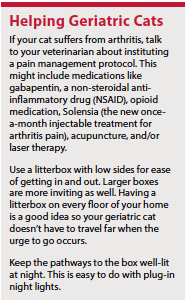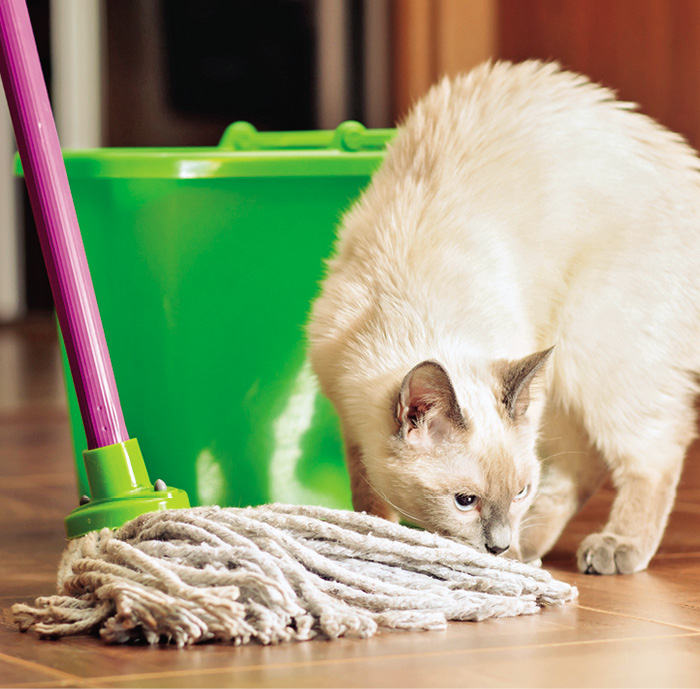Cleaning up after your cat is part of the deal you made when you brought him home. You do it out of love and duty, but let’s be real. It’s not the best thing about having a cat even when the poop is in the litterbox. Now imagine it’s outside the box. Of course, that’s when you lie awake at night praying he never gets diarrhea.
Fecal incontinence, defined as the inability to control defecation, results in involuntary passage of feces. Fortunately, it is not a common problem in cats. Before discussing why it happens, it is helpful to first understand what has to happen for a normal voluntary bowel movement to take place.
This results in tightening of the sphincter to hold the feces in. Once the appropriate time and place has been reached, the brain sends an OK to the anal sphincter, which relaxes, and a normal bowel movement occurs.
 When the rectum fills with feces, rectal nerves send a message to the brain saying, “I need to go.” If it’s not the appropriate time or place to go, the brain sends a message to the nerves controlling the muscles of the anal sphincter saying, “You need to wait.”
When the rectum fills with feces, rectal nerves send a message to the brain saying, “I need to go.” If it’s not the appropriate time or place to go, the brain sends a message to the nerves controlling the muscles of the anal sphincter saying, “You need to wait.”
When Things Go Wrong
As you can see, there are a lot of places where things can go wrong, from the brain to the anal sphincter. Sometimes the cause of fecal incontinence is neurologic, but there are non-neurologic causes as well. Abnormalities of or damage to the colon, rectum, or anus can cause non-neurologic incontinence.
anal sphincter. Sometimes the cause of fecal incontinence is neurologic, but there are non-neurologic causes as well. Abnormalities of or damage to the colon, rectum, or anus can cause non-neurologic incontinence.
Examples of physical reasons for fecal incontinence include trauma, prior surgery, rectal prolapse (protrusion of the rectum through the anus), and perineal hernias. Severe diarrhea, for whatever reason, can cause “urge” incontinence, where the need to go overwhelms the ability to control it. Simply resolving the diarrhea eliminates the incontinence in these cases.
In geriatric cats, sometimes it is a combination of ailments that results in dropping stool around the house. Pain from arthritis or other conditions can make it difficult to posture long enough for a full bowel movement in the box.
Generalized muscle loss weakens the voluntary muscles of the anal sphincter, making geriatric cats less able to contain any stool left behind in the rectum.
Cognitive impairment can play a role, as can visual impairment when it comes to finding the box. See our sidebar for things you can do to help your geriatric cat keep stool in the box.
 Neurologic Causes
Neurologic Causes
Neurologic causes that originate in the brain or spinal cord (upper motor neuron disease) require advanced imaging like CT or MRI for diagnosis, which can be expensive but gives your veterinarian important information. If the lesions are amenable to surgery, the incontinence can potentially be cured.
Neurologic lesions that occur lower down near the pelvic area (lower motor neuron disease) carry a worse prognosis. These are almost always caused by trauma, like being hit by a car and suffering pelvic fractures or a tail-pull injury, which can occur when a cat scoots in front of a motor vehicle and gets her tail trapped by a tire, resulting in stretching or tearing of the nerves at the base of the tail.
One exception to the “almost always caused by trauma” statement is the Manx cat, which has a genetically mediated malformation in the region of the tail that can lead to fecal incontinence. Another exception is fecal incontinence due to inadvertent injury to perineal nerves during surgery for male cats that suffer from repeated urinary blockages.
Veterinary Care
If you find pieces of feces around the house, the first thing your veterinarian needs to determine is whether it is truly fecal incontinence, a behavior issue (inappropriate elimination), or whether it is due to small, ineffective bowel movements secondary to constipation. These distinctions can usually be made with a careful history and a thorough physical examination.
After a full physical exam (including a digital rectal exam to check for tumors, polyps, or anal-sac issues) and thorough neurologic exam, further diagnostics may be recommended depending upon preliminary findings.
Blood tests, fecal tests, X-rays, and abdominal ultrasound may be suggested. If a non-neurologic condition is diagnosed and can be treated, the incontinence or upper motor neuron disease should resolve.
Unfortunately, there is usually no effective treatment for fecal incontinence caused by lower motor neuron disease.
Lower motor neuron fecal incontinence due to trauma may resolve with time, as nerve tissue has the ability to heal. Healing takes many months, but if you can provide the extra care your kitty needs in the meantime, there is a chance that he or she may regain control. Note: Lower motor neuron fecal incontinence is often accompanied by urinary tract issues.ν
Give a Cat a Chance
While not for everyone, caring for a cat with fecal incontinence can be a rewarding experience. You are providing a loving home and good care for a pet whose chances of being adopted into another home are usually very low. And the incontinence is not the cat’s fault.




